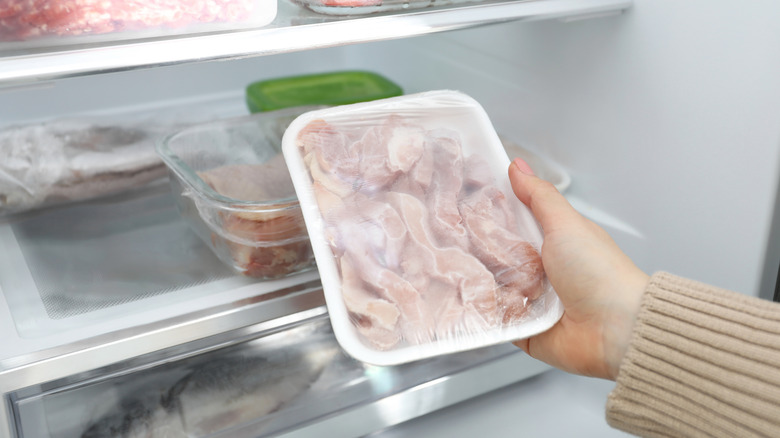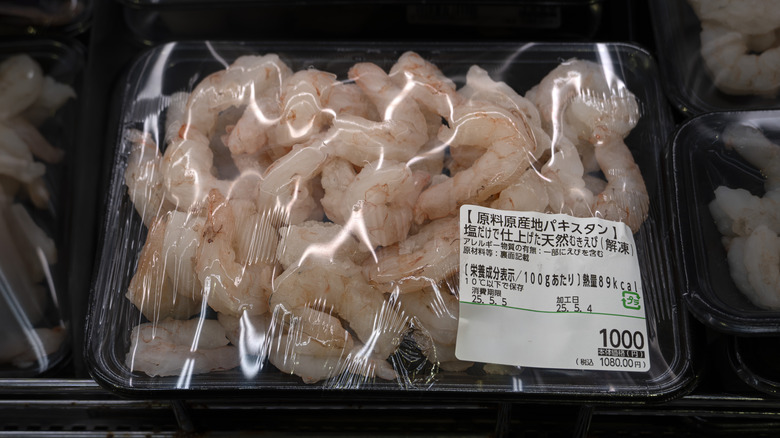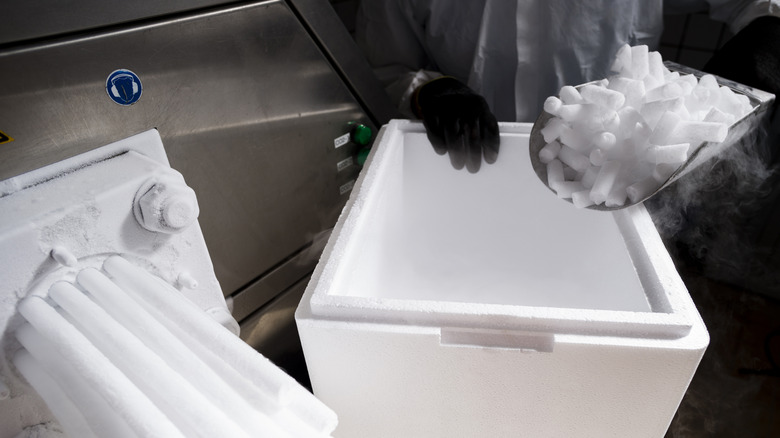How To Safely And Effectively Ship Frozen Food
If you've ever wanted to ship frozen food, whether it's out of a hankering for a certain type of frozen fish or the need to mail meat you bought from a farm, you know that the logistics can take a while to figure out. Shipping frozen food isn't as simple as it sounds. You have to make sure there are no fluctuations in temperature, especially if it's meat you're shipping, as the cooling rate during freezing affects meat to a huge extent. Maintaining a consistent cold chain isn't easy and requires proper planning. Moisture buildup is another crucial factor that massively affects frozen food. Then, there's the issue of regulations. Different regions and countries have varying rules for shipping frozen food due to differing food safety standards. Keeping all these checks in place might sound overwhelming, but if you get the basics lined up, the process of shipping frozen food becomes safe and efficient. So, what do you need to keep in mind?
Proper wrapping of frozen food
This might sound like an obvious suggestion, but properly wrapping frozen food is a checklist in itself. You can't just toss it into any container and hope for the best. The first step is to seal it in watertight plastic bags or, better yet, vacuum-sealed packaging to block out any trace of moisture. Ideally, use a bag with a minimum thickness of 2 mils. Once moisture seeps in, freezer burn begins, and your food is as good as ruined. That even applies to frozen foods that last surprisingly long. Think of it like a bag of chips, tightly packed to keep air and humidity out so the contents stay crisp. That same level of precision matters here. After the inner seal, you'll also need the right outer layer. Foam coolers or heavy corrugated cardboard are the ideal choice for packaging frozen food, as they provide insulation and structural strength to keep it intact through transit. Once the packaging is in place, you can move on to the next step, which is figuring out the right container and temperature.
Maintaining consistent temperature
The first step to achieving a consistent temperature while shipping frozen food is to use insulated containers with thick-walled foam, such as an EPS box or a corrugated box lined with insulation to keep the cold air in and slow down any outside heat transfer. Once that has been figured out, you need dry ice, and not just any kind. It must be food-grade dry ice, made of solid carbon dioxide, in pellet or nugget form. The placement of the dry ice also matters. It should be packed around the food so the cold air can circulate evenly. Do remember to wear protective gloves to prevent cold burns when handling dry ice. Another really important detail is to never seal the box in a way that air is unable to escape. It is essential for the carbon dioxide released from the dry ice to escape; otherwise, the pressure can build up and become hazardous.
Using correct labels
Accurate labeling might just be the toughest part of shipping frozen food, mostly because every country plays by its own rules. In the U.S., for instance, you'll need the paperwork to match the cargo, which includes a commercial invoice, a bill of lading, and in some cases, a certificate of origin. The good news is that you don't need prior FDA approval to import frozen food. What you do need, however, is to file a prior notice before shipping, and if your shipment comes from a farm or facility, that site must also be FDA-registered. Wherever you're sending your shipment, the basics remain non-negotiable. Packages should be clearly marked as perishable or keep frozen, along with both shipper and recipient addresses. When dry ice is in play, the box must carry the proper hazard code and dry ice symbol. Above all, labels should be built to last. They should be durable, weatherproof, and tough enough to survive the journey just as well as the food inside.
Shipping frozen food can be a tricky affair and leave you frazzled about having to figure out so many things at once. With these basics in check, the process can become less overwhelming and a lot simpler.



